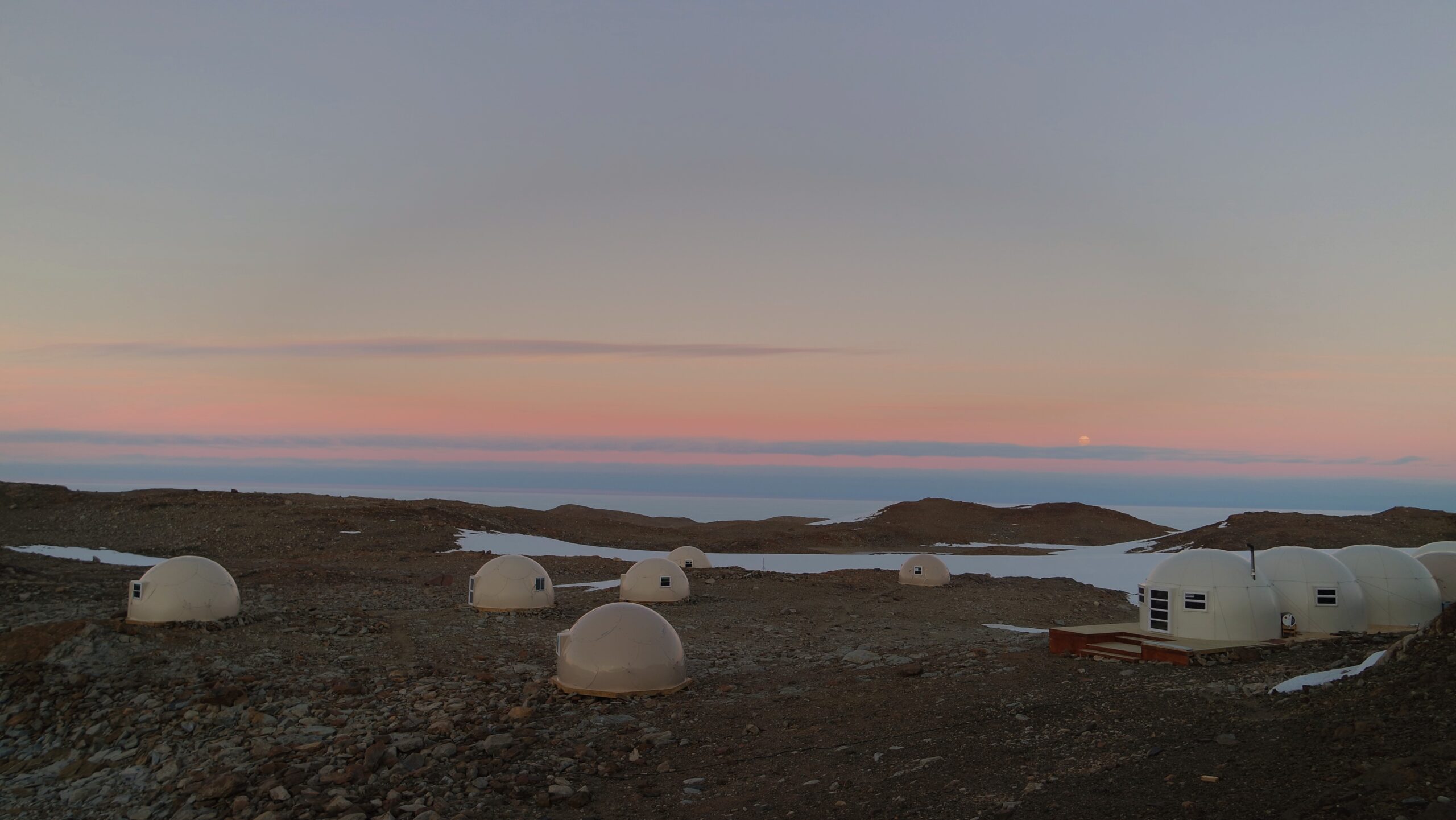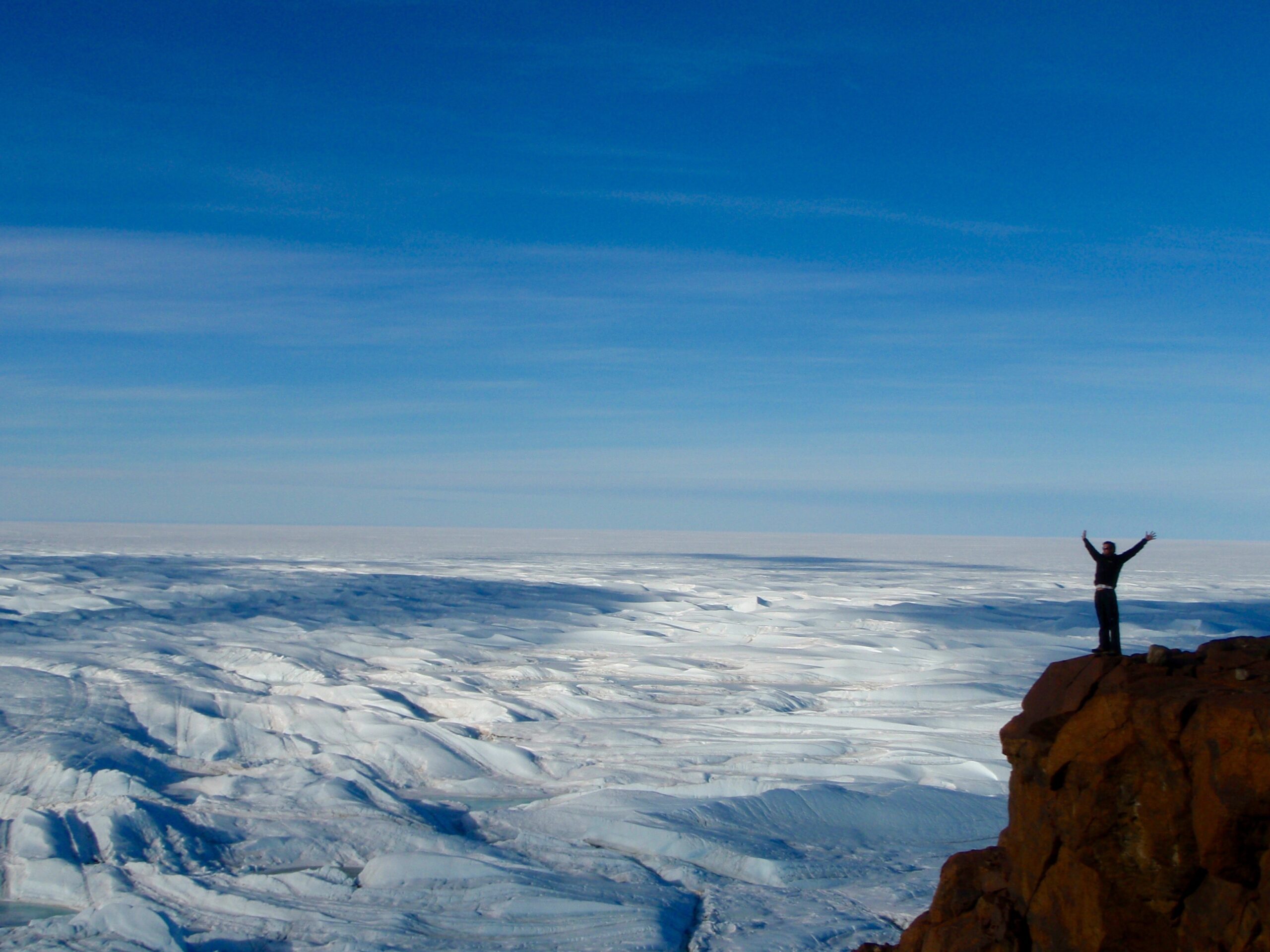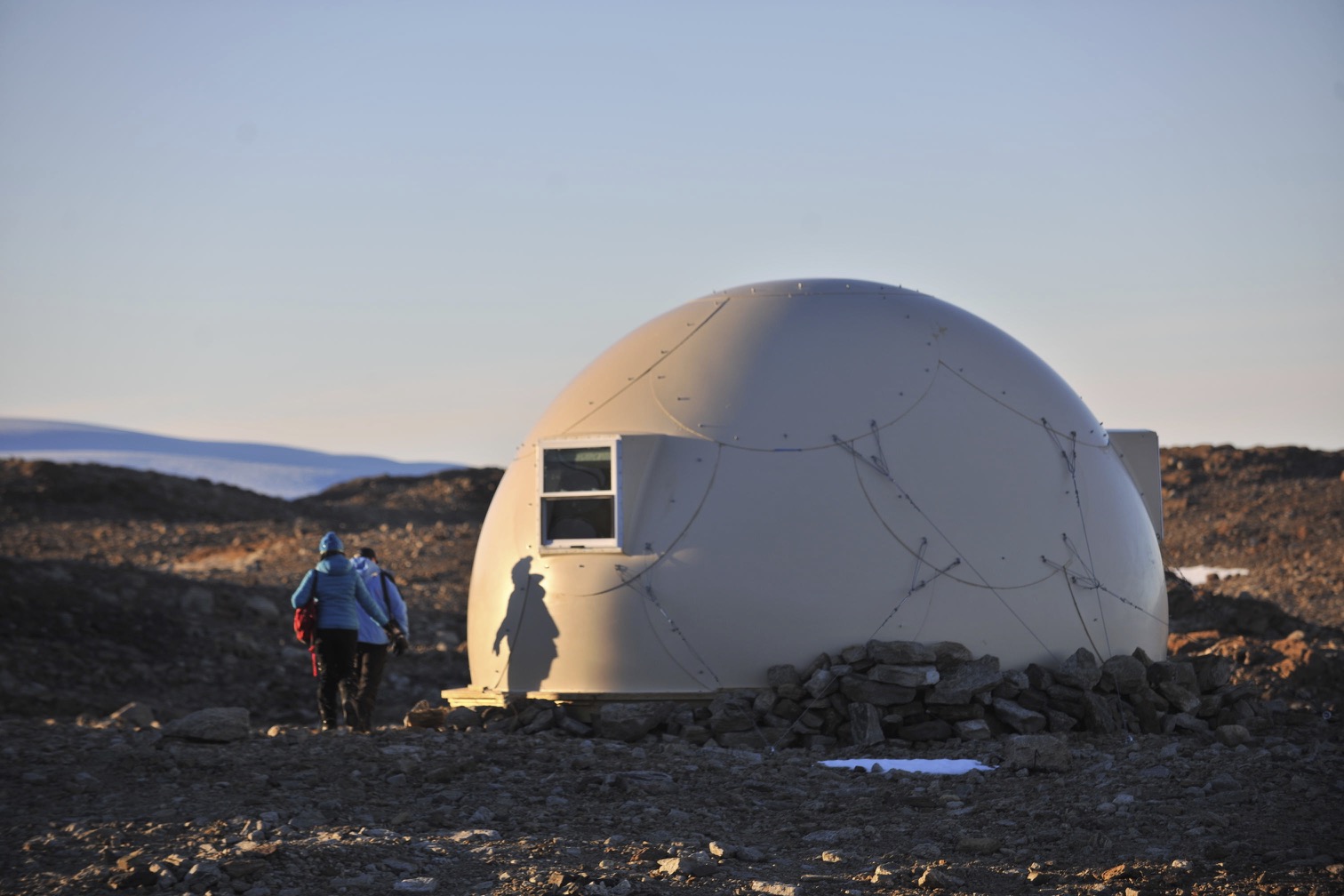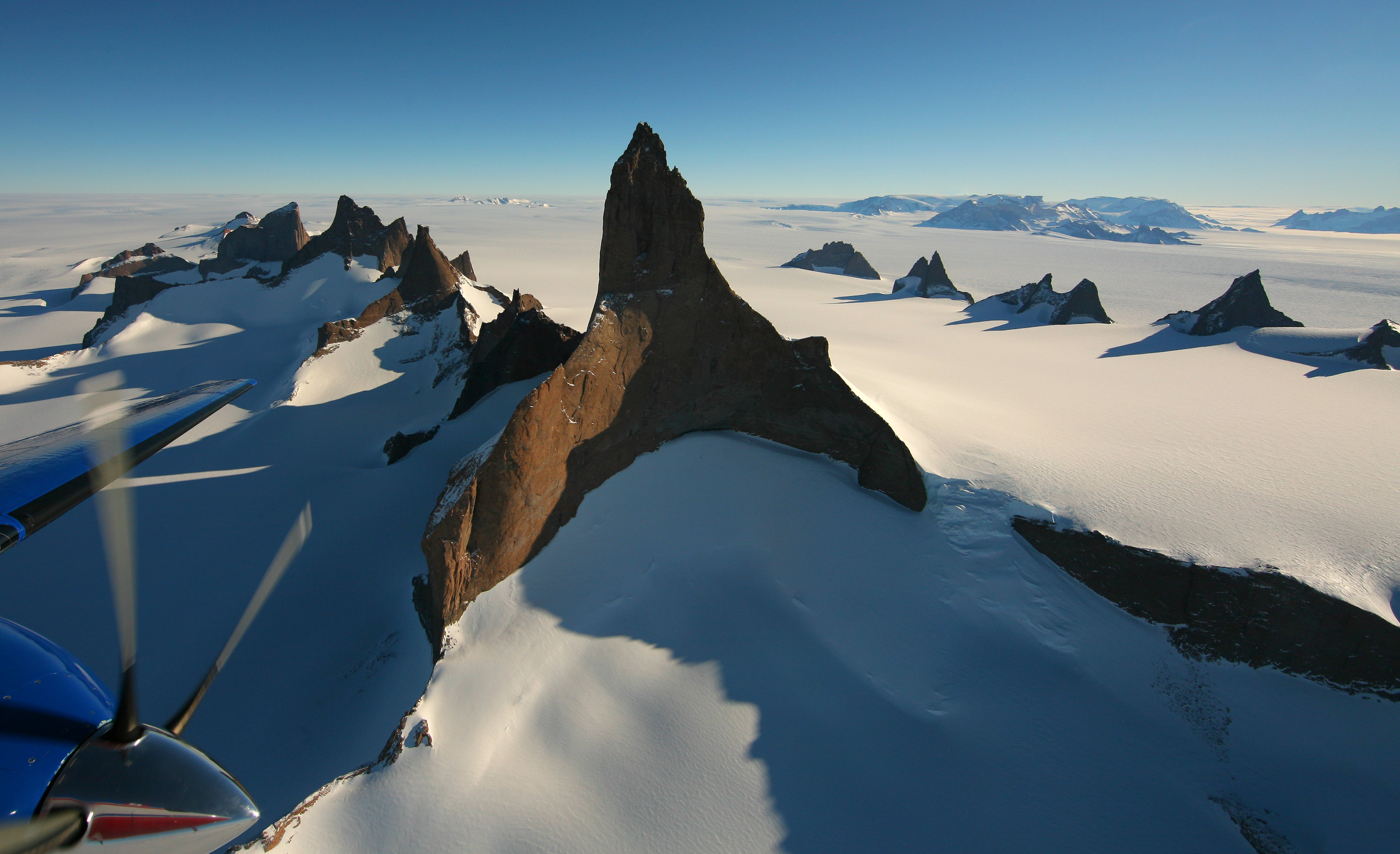Trip planning for the post-coronavirus age will take some dreamers to the most remote corners of the Earth, as they go in search of beauty, space and meaning. Globetrender speaks with Robyn Woodhead, co-founder of White Desert, about its luxury camps in Antarctica, which offer profoundly life-changing stays from the end of 2020 and beyond. With arrivals by Gulfstream private jet, you can even come for the day…
What is White Desert?
White Desert is the first company in the world to offer a luxury private jet service to Antarctica. Guests can either stay at our flagship luxury White Desert Whichaway Camp – the only luxury camp in Antarctica, with high-tech and eco-friendly pods that accommodate up to 12 people – or at our new Wolf’s Fang camp.
This camp is a more off-grid explorer camp than Whichaway, and is located close to White Desert’s ice runway. Wolf’s Fang has a mountainous backdrop that offers a dramatic and breath-taking contrast with Whichaway’s location near the coast.
Activities at Wolf’s Fang include hiking and climbing on nearby ridges, peaks and nunataks (the protruding rocky summits of mountains that are almost entirely covered in glacial ice), as well as overnight ski-touring expeditions to nearby glacial valleys, and fat-bike excursions on high-end mountain bikes equipped with studded snow tyres.
Accommodation at Wolf’s Fang is in seven bespoke heated and insulated tents that offer guests a chance to experience a taste of old-world explorer life in 21st-century luxury.  Whichaway Camp was established in 2010 and remains White Desert’s signature luxury camp, accommodating up to 12 clients in a manner that is unparalleled in Antarctica, hosted by a team that spans award-winning chefs and world-class UIAGM-qualified mountain guides.
Whichaway Camp was established in 2010 and remains White Desert’s signature luxury camp, accommodating up to 12 clients in a manner that is unparalleled in Antarctica, hosted by a team that spans award-winning chefs and world-class UIAGM-qualified mountain guides.
Whichaway is situated in East Antarctica’s Schirmacher Hills, on a largely ice-free rock plateau that is home to more than 100 freshwater lakes. For those that assume Antarctica is a barren, frozen wasteland, Whichaway provides an extraordinary reminder that the continent is home to a unique biosphere. Petrels, terns and skuas are regularly seen overhead, and Adelie penguins nest a few hundred metres away from the camp.
The conditions there are relatively mild – at least by Antarctic standards – with daily average temperatures during the season of -5ºC.
Activities at Whichaway include guided ice climbing (at a location that is particularly well-suited to beginners), hikes over the nearby ice waves – giant pressure ridges formed against Antarctica’s coastline – climbing nearby ridges and peaks, picnic lunches and a via cordata (a mixture of hiking and rock-climbing) route around a stunning and remote headland.
Accommodation at Whichaway comprises seven state-of-the-art sleeping pods, and a communal area that includes a dining room, a lounge, a library, a cocktail deck and a soon to be launched sauna experience.
How is it innovative?
 To be innovate means to create something new. We created a new way to travel and to experience Antarctica. Setting up an eco operation on the most hostile and remote continent this Earth has to offer requires constant innovation.
To be innovate means to create something new. We created a new way to travel and to experience Antarctica. Setting up an eco operation on the most hostile and remote continent this Earth has to offer requires constant innovation.
Building a blue ice runway in Antarctica took many years of research, luck and hard work. On a continent with no shops on it, we had to transport every single nut, bolt, bed, mug, meal, crystal glass via ship or cargo plane.
White Desert’s two camps are the height of eco innovation. But they are both very different from each other. They offer two distinctly different opportunities to experience the natural majesty – and unique opportunities for adventure and inspiration – that only Antarctica can offer, and both offer White Desert’s unrivalled and signature level of customer service and accommodation.

Both camps answer the needs of clients who long for different and more radical life experiences, with Antarctica’s profoundly impressive backdrop providing the chance to genuinely reconnect with nature in a way that nowhere else on Earth can match.
When did White Desert launch?
I founded it with my husband Patrick in 2005.
How does White Desert do travel to Antarctica differently to other companies?
We wondered why only scientists and the odd polar explorer, who walked there, ever got to see the real interior of Antarctica. We wanted to safely and responsibly show the interior of the white continent to a very small number of select guests to help create a corps of Antarctic Ambassadors who would take memories and a passion of this special place back to their homes and help preserve this continent for future generations.
How does it keep its environmental footprint to a minimum?
 White Desert is the only aviation operator in Antarctica (including government programmes) to be entirely carbon neutral throughout our supply chain, from flights to camp emissions, a status the company has held since 2007.
White Desert is the only aviation operator in Antarctica (including government programmes) to be entirely carbon neutral throughout our supply chain, from flights to camp emissions, a status the company has held since 2007.
We are very mindful of our potential to impact the environment. Antarctica is the front line when it comes to climate change and from the very beginning, we felt it vital to offset all of our emissions throughout our supply chain through the funding of certified replanting and renewable projects in the Amazon, Indonesia and India.
The camp is also temporary, and built without any foundations or cement, so can be removed, overhauled or upgraded without a trace. Additionally, all waste is transported out of Antarctica at the end of the season.
How much to trips cost?
Prices range from US$13,500 per person to US$92,500.
What do they involve?
We offer several different bespoke experiences to Antarctica, starting with the Greatest Day, a one-day trip, up to eight-day stays in with our longer South Pole and Emperor, and Emperor and Mountains Trips. Guests can choose to do as much or as little as they desire when there.
This ranges from gentle treks to a series of blue ice tunnels excursions, visiting giant ice waves towards the coast, picnics with remarkable vistas, and visits to the nearby Indian and Russian science bases. For the even more adventurous, we offer an Explorer Academy, which we recently launched with polar explorer Ben Saunders, one of our Ambassadors, as their guide, doing activities such as technical rock climbing, abseiling, and the opportunity for guests to learn the skills of a polar explorer from experts.
Who is your target audience?
We target the curious traveller, wanting to collect unusual and exceptionally memorable life experiences. People who have “seen it all” and crave the ultimate in luxury, an experience to last a lifetime.
We have also had a few wedding ceremonies out there, family gatherings, climate change activists, marathons, astronauts wanting to see the bottom of the world, royals wanting some real off-grid time and entrepreneurs wanting a digital detox. Our guest base is as varied as the world itself.
How often do you fly people out there? What is the season for visiting?
The season for visiting is November to February, which is summer in Antarctica and a time of 24-hour sunlight.
What is the guest experience like in the camp?
It depends on the type of trip they join us for. The Whichaway Camp has sleeping pods that are heated and designed for two people in each. At just over six metres in diameter, they are also spacious and come with a writing desk, wash area and toilet.
The rest of the camp comprises a shower pod, kitchen and three centralised pods that make up the reception, lounge and dining room. While the exterior is made from cutting edge materials, the interior has an old-world feel with rich textures. Here you can relax and enjoy the food from our award-winning chef.
How do you operate a luxury camp like this, logistically?
Very complex logistics. We share charter of an Antarctic science vessel to transport some of our equipment and supplies. We have incredible teams of staff with sometimes unmatched polar experience driving tracked vehicle traverses to get our supplies to the various camps.
We operate a number of planes to get supplies and the odd scientist to their science bases along the way whenever we can. We work very closely with the British Foreign Office on all our permitting to operate complex logistics safely and in an environmentally friendly manner, to ensure we minimise our impact on this continent.
What is the future for tourism to Antarctica?
Nobody owns Antarctica. The Antarctic Treaty and related agreements, collectively known as the Antarctic Treaty System, regulates international relations with respect to Antarctica. It is Earth’s only continent without a native human population.
In terms of tourism to Antarctica, it is regulated by the International Association of Antarctic Tour Operators. Founded in 1991, its primary goal is to advocate and promote the practice of safe and environmentally responsible private sector travel to Antarctica.
I sit on the executive committee of this members’ organisation and try to help manage challenges for the future of Antarctica, such as tourism growth management, climate change mitigation, non native species introduction, drone flying protocol and helicopter guidelines.
What’s coming next? Trend reports available to download HERE



